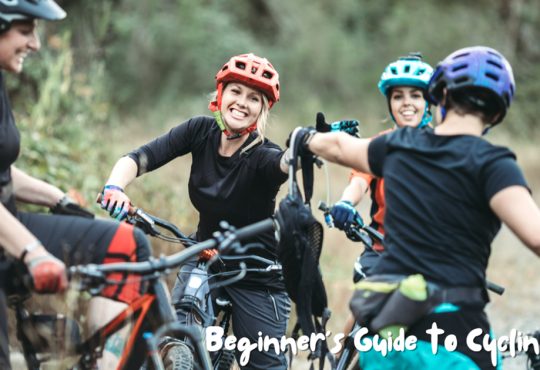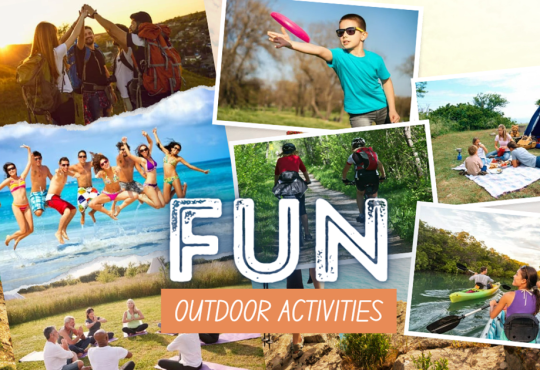Have you ever gazed out over a lake, watching the graceful arcs of wakeboarders slicing through the water, and wondered, “Can beginners do wakeboarding?” Well, wonder no more! Whether you’re a seasoned water sports enthusiast or dipping your toes into the world of extreme sports for the first time, wakeboarding offers an exhilarating experience for all levels. In this guide, we’ll explore the ins and outs of wakeboarding for beginners, from how to get started to essential tips for mastering the waves. So grab your board and let’s dive in!
Getting Started:
Finding the Right Equipment:
When venturing into the world of wakeboarding, selecting the appropriate equipment is paramount to your success and enjoyment on the water. As a beginner, it’s crucial to start with a wakeboard specifically crafted for stability and control, allowing you to build confidence as you learn the ropes. Here are five top picks for beginner wakeboards:
- Hyperlite State 2.0 Wakeboard:
- Designed with beginners in mind, the Hyperlite State 2.0 Wakeboard offers stability and forgiveness, making it ideal for riders just starting their wakeboarding journey. Its continuous rocker profile provides a smooth ride and predictable performance, allowing beginners to progress with ease.
- Liquid Force Classic Wakeboard:
- The Liquid Force Classic Wakeboard is another excellent option for beginners seeking a board that balances stability with performance. Its mellow 3-stage rocker and molded-in fins provide stability and control, while its durable construction ensures longevity, even with frequent use.
- Ronix Vault Wakeboard:
- The Ronix Vault Wakeboard is engineered to help beginners master the basics and progress quickly. Its wider profile and softer flex make it forgiving and easy to control, while its asymmetrical design enhances edge hold and stability, even for novice riders.
- Slingshot Terrain Wakeboard:
- The Slingshot Terrain Wakeboard is renowned for its versatility and forgiving ride, making it an excellent choice for beginners exploring different styles of wakeboarding. Its continuous rocker and subtle channels offer stability and control, allowing riders to tackle a variety of conditions with confidence.
- CWB Reverb Wakeboard:
- The CWB Reverb Wakeboard is specifically crafted for beginner to intermediate riders looking to improve their skills on the water. Its subtle 3-stage rocker and center spine provide stability and smooth landings, while its reinforced edges enhance durability, making it a reliable choice for riders of all levels.
In addition to selecting the right wakeboard, it’s essential to invest in comfortable and supportive bindings to keep your feet secure. Don’t forget to equip yourself with a well-fitting life jacket for safety on the water. With the right equipment at your disposal, you’ll be ready to embark on your wakeboarding journey with confidence and peace of mind.
Choosing the Perfect Location:
Selecting the right location is crucial for a successful and enjoyable wakeboarding experience, especially for beginners who are just starting to get their sea legs. Here are some key factors to consider when choosing the perfect spot:
- Opt for Calm, Flat Waters: As a beginner, it’s essential to start your wakeboarding journey on calm, flat waters. Avoid locations with strong currents, choppy waves, or turbulent conditions, as these can make it challenging to maintain balance and control on the board. Look for lakes, reservoirs, or sheltered bays that offer tranquil conditions conducive to learning and practicing.
- Avoid Obstacles: When scouting for a wakeboarding location, steer clear of areas with submerged obstacles such as rocks, logs, or debris. These hazards pose a significant risk of injury and can damage equipment if accidentally collided with. Opt for open waters with ample space and clear visibility to ensure a safe and obstacle-free riding environment.
- Designated Wakeboarding Areas: Many lakes and waterways feature designated wakeboarding areas specifically tailored for riders of all skill levels. These areas are typically marked by buoys or signage and may include amenities such as boat launches, docks, and designated spectator areas. Utilizing these designated areas provides a structured and regulated environment for practicing your wakeboarding skills while minimizing conflicts with other water users.
- Beginner-Friendly Lakes: Some lakes are renowned for their beginner-friendly conditions, making them ideal destinations for novice wakeboarders. These lakes often boast calm, glassy waters, minimal boat traffic, and expansive open spaces perfect for honing your skills without distractions. Research local lakes in your area or consult with fellow wakeboarders to discover hidden gems suited for beginners.
By prioritizing safety and selecting the right location for your wakeboarding adventures, you’ll set yourself up for success and enjoyment on the water. Remember to always adhere to local regulations, respect other water users, and practice responsible boating etiquette to ensure a positive experience for everyone.
Seeking Professional Instruction:
While the allure of wakeboarding may tempt you to jump right in and hit the waves solo, enrolling in a beginner’s wakeboarding lesson with a certified instructor is a wise investment in your safety and skill development. Here’s why professional instruction is essential for beginners:
- Expert Guidance: Certified wakeboarding instructors possess extensive knowledge and experience in teaching riders of all levels, ensuring you receive expert guidance tailored to your skill level and learning pace. Their insight into proper technique, equipment usage, and safety procedures will set you up for success from the get-go.
- Skill Development: A structured wakeboarding lesson provides the opportunity to learn and practice essential skills under the watchful eye of a qualified instructor. From mastering your stance and getting up on the board to executing turns and jumps, each aspect of wakeboarding is broken down into manageable steps, allowing you to progress at your own pace with personalized feedback and support.
- Safety Procedures: Safety is paramount in any water sport, and wakeboarding is no exception. During your lessons, instructors will emphasize the importance of safety procedures, including proper use of equipment, communication signals, and awareness of your surroundings. Learning how to navigate the water safely not only protects you but also enhances the overall enjoyment of your wakeboarding experience.
- Confidence Building: Confidence plays a significant role in wakeboarding success, and professional instruction instills the confidence you need to tackle new challenges and push your limits. With the encouragement and guidance of your instructor, you’ll feel empowered to step out of your comfort zone and strive for continuous improvement, ultimately enhancing your overall enjoyment of the sport.
By enrolling in a beginner’s wakeboarding lesson with a certified instructor, you’ll gain the foundational knowledge, skills, and confidence needed to embark on your wakeboarding journey with enthusiasm and safety in mind. So don’t hesitate to seek out professional instruction and take your first steps towards becoming a proficient wakeboarder!
How to Wakeboard:
Stance and Balance:
Mastering your stance and maintaining balance are fundamental aspects of wakeboarding that significantly impact your performance and enjoyment on the water. Here’s a breakdown of key tips for achieving optimal stance and balance:
- Starting Position:
- Begin by assuming a crouched position on the wakeboard, with your knees bent and arms extended forward. This low, compact stance lowers your center of gravity and stabilizes your body, preparing you for takeoff.
- Weight Distribution:
- Keep your weight centered over the wakeboard by evenly distributing it between both feet. Avoid leaning too far forward or backward, as this can throw off your balance and cause instability. By maintaining a balanced weight distribution, you’ll remain in control and ready to react to changes in the water’s surface.
- Foot Placement:
- Position your feet shoulder-width apart on the wakeboard, with your toes pointed slightly outward for stability. Ensure that your bindings are securely fastened to keep your feet locked in place throughout your ride. Experiment with foot placement to find the most comfortable and stable position for your riding style and preferences.
- Flexibility and fluidity:
- While maintaining a stable stance is essential, it’s equally important to remain flexible and adaptable as you ride. Allow your body to move fluidly with the motion of the wakeboard, adjusting your stance and weight distribution as needed to navigate turns, jumps, and waves. By staying relaxed and responsive, you’ll minimize fatigue and maximize your agility on the water.
- Visual Focus:
- Keep your eyes focused on the horizon or an object in the distance to help maintain balance and orientation. Avoid staring down at your feet or fixating on the wakeboard, as this can disrupt your equilibrium and hinder your ability to react to changes in the water’s surface.
Getting Up:
Mastering the skill of getting up on your wakeboard is the pivotal moment that launches your ride across the water’s surface. Here’s a step-by-step guide to executing this essential maneuver with confidence and finesse:
- Handle Grip and Arm Position: Begin by gripping the handle with both hands, keeping your arms extended and straight. Maintain a firm but relaxed grip on the handle, allowing for flexibility and control as you rise out of the water.
- Gradual Pressure Application: As the boat starts to pull you forward, gradually apply pressure to the wakeboard by pressing your feet against the board’s surface. Focus on distributing your weight evenly between both feet to initiate upward momentum while maintaining stability.
- Rising Out of the Water: As you feel the board start to plane and lift out of the water, engage your core muscles and maintain a slight bend in your knees. This helps absorb the force of the boat’s pull and stabilizes your body as you transition from a submerged position to riding on the surface.
- Back Straight, Knees Bent: Throughout the getting-up process, strive to keep your back straight and your chest lifted to maintain proper posture and balance. Avoid hunching forward or leaning too far back, as this can compromise your stability and make it more difficult to control the wakeboard.
- Smooth Transition to Standing: As you rise out of the water, focus on smoothly transitioning from a crouched position to standing upright on the wakeboard. Keep your movements fluid and controlled, using your leg muscles to support your weight and maintain balance.
By following these steps and practicing the getting-up technique repeatedly, you’ll develop the muscle memory and confidence needed to execute this foundational maneuver with ease. Remember to remain patient and persistent, as mastering the art of getting up is an essential milestone on your wakeboarding journey.
Riding the Waves:
Once you’ve successfully gotten up on your wakeboard, the real fun begins as you ride the waves and carve your way across the water. Here’s how to make the most of your wakeboarding experience:
- Maintain Focus and Relaxation: Keep your eyes focused on the path you want to take, rather than looking down at your feet or fixating on the wakeboard. Maintaining a forward gaze helps improve balance and orientation while keeping you aware of any obstacles or changes in the water’s surface. Additionally, strive to keep your body relaxed and loose, allowing for smooth and fluid movements as you navigate the waves.
- Shift Weight for Turns and Carves: To initiate turns and carve through the water, shift your weight by leaning in the direction you want to go. For example, if you want to turn left, shift your weight slightly onto your toes and lean towards your left side. This transfers pressure to the edge of the wakeboard, causing it to carve through the water and change direction. Experiment with different weight shifts and angles to execute sharp turns and graceful carves with precision and control.
- Control Speed and Balance: As you gain confidence and experience on the wakeboard, practice controlling your speed by adjusting your stance and body position. To increase speed, lean slightly forward and apply gentle pressure to the front of the wakeboard. Conversely, to slow down or come to a stop, shift your weight back and lean towards the rear of the wakeboard. Finding the right balance between speed and stability is key to maximizing control and enjoyment while riding the waves.
- Mastering Balance Techniques: As you ride, focus on maintaining a balanced stance by keeping your weight centered over the wakeboard. Use your core muscles and leg strength to stabilize your body and absorb the impact of waves or boat wakes. By practicing balance techniques such as flexing your knees, adjusting your stance width, and shifting your weight as needed, you’ll develop the agility and stability required to tackle varying water conditions with confidence.
By incorporating these tips into your riding technique and embracing the thrill of carving through the water, you’ll unlock a world of exhilarating possibilities on your wakeboarding adventures.
Preparing for Wakeboarding:
Physical Conditioning:
Preparing your body for the demands of wakeboarding requires more than just time on the water; it requires a commitment to physical conditioning. By focusing on strengthening key muscle groups and improving balance and agility, you’ll enhance your performance and reduce the risk of injury. Here’s how to condition your body for wakeboarding:
- Strengthen Core, Legs, and Arms: Wakeboarding engages multiple muscle groups simultaneously, making it essential to build strength and endurance in your core, legs, and arms. Incorporate exercises such as squats, lunges, and planks into your workout routine to target these areas effectively. Squats and lunges strengthen the muscles of the lower body, including the quadriceps, hamstrings, and glutes, which are crucial for stability and power generation while riding. Planks engage the core muscles, including the abdominals and lower back, helping improve balance and posture on the wakeboard.
- Improve Balance and Agility: Balance and agility are key components of successful wakeboarding, allowing you to maintain stability and react quickly to changes in the water’s surface. Activities like yoga and paddleboarding are excellent ways to enhance these skills while also improving flexibility and body awareness. Yoga poses such as tree pose, warrior pose, and balancing half-moon pose challenge your balance and proprioception, enhancing your ability to maintain equilibrium on the wakeboard. Similarly, paddleboarding requires core stability and coordination, making it an effective cross-training activity for wakeboarding.
- Functional Strength Training: In addition to traditional strength exercises, incorporate functional training movements that mimic the dynamic nature of wakeboarding. Exercises such as medicine ball throws, cable rotations, and stability ball exercises target stabilizing muscles and improve overall athleticism. By simulating the movements and demands of wakeboarding in your workouts, you’ll build functional strength and endurance that directly translate to improved performance on the water.
- Flexibility and Mobility: Don’t overlook the importance of flexibility and mobility in preventing injuries and optimizing performance. Incorporate stretching exercises and mobility drills into your warm-up and cool-down routines to improve joint range of motion and muscle elasticity. Focus on areas commonly tight or prone to injury in wakeboarding, such as the hips, hamstrings, and shoulders. By maintaining flexibility and mobility, you’ll reduce the risk of muscle strains and improve your ability to execute maneuvers with precision and control.
Mental Preparation:
While physical conditioning is crucial for wakeboarding success, mental preparation is equally important for overcoming challenges and achieving your goals on the water. Here’s how to harness the power of your mind to enhance your wakeboarding experience:
- Visualization Techniques: Visualization is a powerful mental tool that allows you to mentally rehearse and envision yourself successfully wakeboarding. Close your eyes and visualize every aspect of your ride, from getting up on the board to executing turns and jumps with precision and confidence. Imagine yourself conquering any obstacles or challenges that may arise, maintaining focus and composure as you navigate the water’s surface. By repeatedly visualizing success, you’ll prime your mind and body for peak performance when it’s time to hit the waves for real.
- Positive Mindset: Cultivating a positive mindset is essential for overcoming setbacks and staying motivated during your wakeboarding journey. Instead of dwelling on mistakes or setbacks, focus on your progress and celebrate small victories along the way. Adopt a can-do attitude and believe in your ability to learn and improve with each session on the water. Surround yourself with supportive friends and fellow wakeboarders who uplift and encourage you, helping to reinforce your positive outlook and keep you motivated to pursue your wakeboarding goals.
- Patience and Persistence: Wakeboarding is a skill-intensive sport that requires time, practice, and patience to master. Embrace the learning process and understand that progress may come in small increments rather than dramatic leaps. Stay patient and persistent, trusting in your ability to learn and adapt over time. Be willing to push past your comfort zone and embrace challenges as opportunities for growth and improvement. By maintaining a resilient mindset and persevering through obstacles, you’ll build confidence and resilience that serve you well both on and off the water.
- Mindfulness and Relaxation: Incorporate mindfulness and relaxation techniques into your pre-ride routine to calm nerves and focus your attention. Practice deep breathing exercises, progressive muscle relaxation, or meditation to center yourself and alleviate any pre-ride jitters. Clear your mind of distractions and worries, allowing you to enter each wakeboarding session with a calm and focused mindset. By fostering a state of mental clarity and presence, you’ll enhance your performance and enjoyment on the water.
Safety Measures:
Prioritizing safety is paramount in wakeboarding to mitigate risks and ensure a positive and enjoyable experience for everyone involved. Here are some essential safety measures to incorporate into your wakeboarding routine:
- Wear Protective Gear: Before hitting the water, always wear appropriate protective gear to safeguard yourself against potential injuries. A helmet is a non-negotiable piece of equipment that protects your head from impact during falls or collisions. Choose a helmet specifically designed for water sports with a snug and comfortable fit. Additionally, consider wearing impact vests, knee pads, and elbow pads to provide extra protection for vulnerable areas of the body. Investing in high-quality protective gear is an investment in your safety and well-being on the water.
- Communicate Effectively: Clear communication is essential for maintaining safety and coordination among wakeboarders and boat occupants. Before starting a ride, establish hand signals and communication protocols with the boat driver to indicate when you’re ready to start, stop, or adjust speed. Use standardized signals recognized by all parties to minimize confusion and ensure smooth communication during the ride. Additionally, maintain open communication with fellow wakeboarders to coordinate turns, jumps, and passes, reducing the risk of collisions and conflicts on the water.
- Stay Aware of Surroundings: Maintain situational awareness at all times by staying vigilant and attentive to your surroundings on the water. Keep an eye out for other boats, watercraft, swimmers, and obstacles that may pose a hazard to your safety. Be mindful of changing weather conditions, water depth, and water traffic patterns that could impact your ride. By staying alert and proactive, you can anticipate potential risks and take proactive measures to avoid accidents or incidents.
- Know Your Limits: Recognize and respect your skill level and physical capabilities when wakeboarding, and avoid pushing yourself beyond your limits. Start with beginner-friendly maneuvers and gradually progress to more advanced tricks as you gain confidence and proficiency. Listen to your body and take breaks as needed to prevent fatigue and reduce the risk of overexertion or injury. Remember that safety should always take precedence over bravado or peer pressure, so don’t hesitate to dial back the intensity if conditions become challenging or unsafe.
- Follow Boating Regulations: Familiarize yourself with local boating regulations and safety guidelines specific to wakeboarding areas. Adhere to speed limits, no-wake zones, and designated wakeboarding areas to minimize conflicts with other water users and ensure a safe and enjoyable experience for everyone. Respect buoy markers, navigation aids, and shoreline boundaries to avoid accidents and protect sensitive habitats. By practicing responsible boating behavior, you contribute to a culture of safety and sustainability on the water.
Can beginners do wakeboarding?
By incorporating these safety measures into your wakeboarding routine, you’ll create a safer and more enjoyable environment for yourself and others on the water. Remember that safety is a shared responsibility, and every wakeboarder plays a crucial role in promoting a culture of safety and respect in the wakeboarding community.
The question “Can beginners do wakeboarding?” is met with a resounding yes! With the right equipment, instruction, and preparation, anyone can enjoy the thrill of wakeboarding on the open water. Remember to start slow, stay safe, and most importantly, have fun! So, whether you’re carving your first wake or mastering advanced tricks, embrace the challenge and dive into the exciting world of wakeboarding with confidence.





